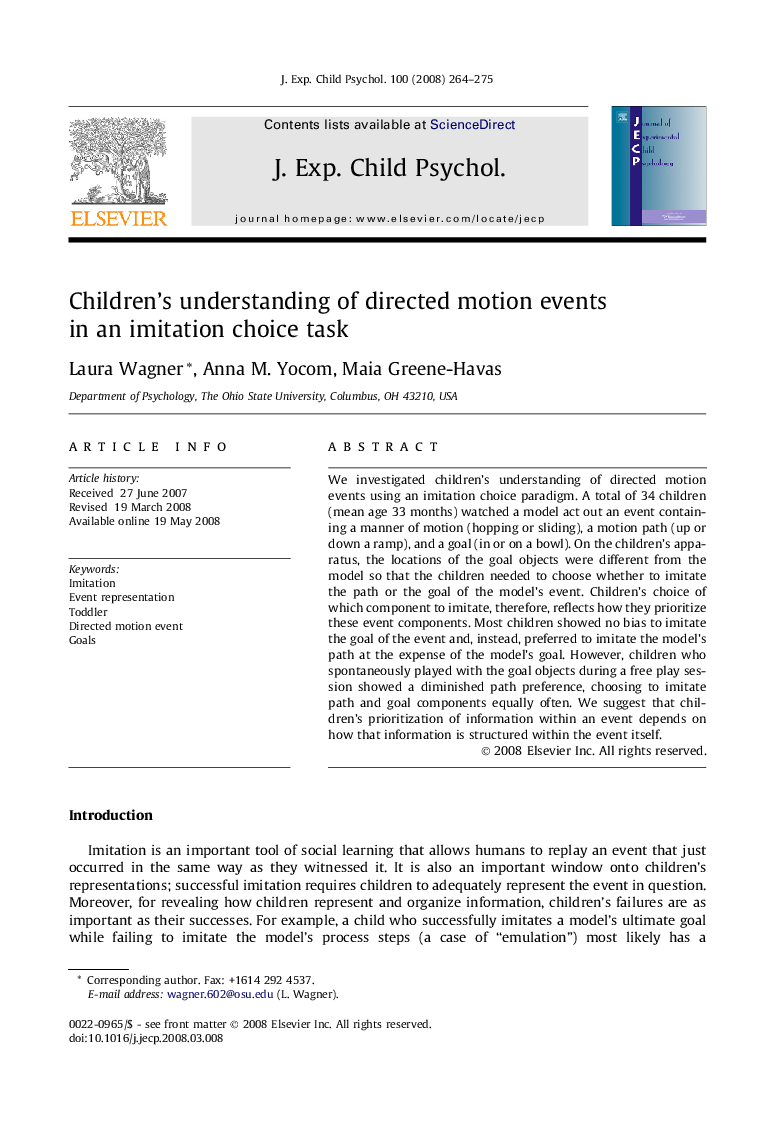| Article ID | Journal | Published Year | Pages | File Type |
|---|---|---|---|---|
| 918712 | Journal of Experimental Child Psychology | 2008 | 12 Pages |
We investigated children’s understanding of directed motion events using an imitation choice paradigm. A total of 34 children (mean age 33 months) watched a model act out an event containing a manner of motion (hopping or sliding), a motion path (up or down a ramp), and a goal (in or on a bowl). On the children’s apparatus, the locations of the goal objects were different from the model so that the children needed to choose whether to imitate the path or the goal of the model’s event. Children’s choice of which component to imitate, therefore, reflects how they prioritize these event components. Most children showed no bias to imitate the goal of the event and, instead, preferred to imitate the model’s path at the expense of the model’s goal. However, children who spontaneously played with the goal objects during a free play session showed a diminished path preference, choosing to imitate path and goal components equally often. We suggest that children’s prioritization of information within an event depends on how that information is structured within the event itself.
